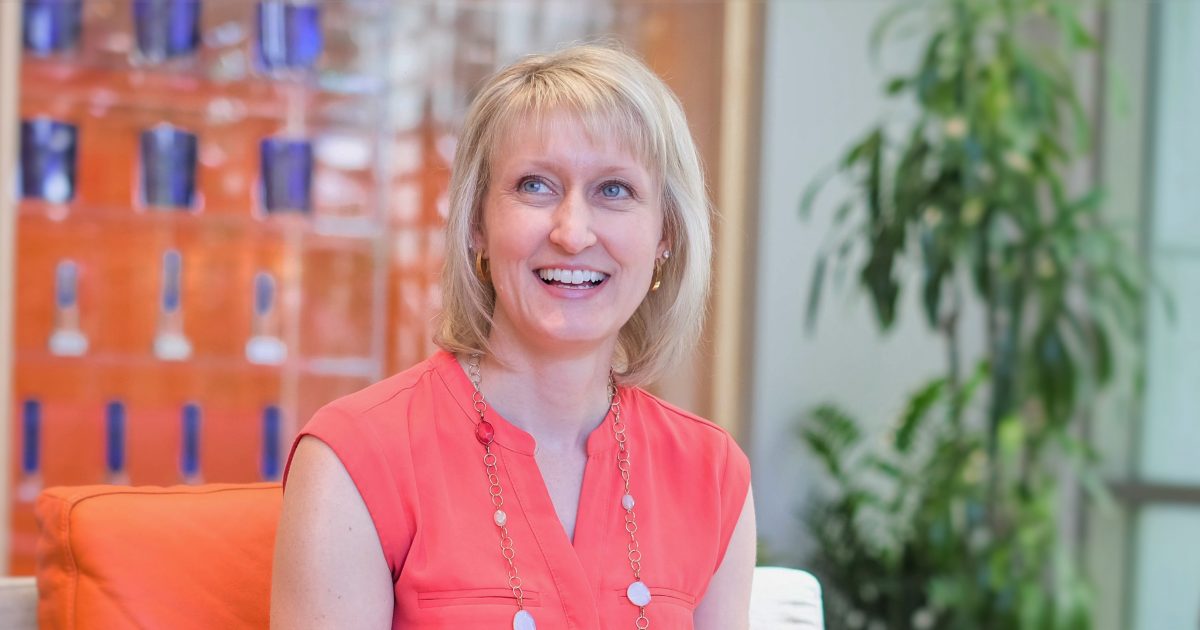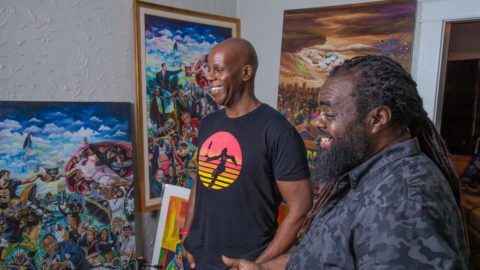Dynamic leader helps bring out the best in people
How mentors at Microsoft help advance employees’ careers
John Gilmour wouldn’t likely have the great job he has at Microsoft today if not for his manager and mentor, Jacquelyn Crowhurst.
Two years after she hired him as a Platform Strategy Advisor, a sales director role opened up on her team. He didn’t think he had enough experience for it, but Crowhurst helped convince him to apply.
“She encouraged me to get out of my comfort zone,” he says. She also helped build his confidence and made sure he had peer support and coaching while he settled into the role.
Nurturing others’ success is a favorite aspect of the job for Crowhurst, general manager of the U.S. Developer Experience (DX) and Evangelism Tools Team–– and that kind of mentorship is a big part of how new employees grow their expertise and advance their careers at Microsoft. It comes from the company’s commitment to having a growth mindset that encourages employees to keep learning and be curious.
Crowhurst is a strong example of a mentor who is passionate about helping people learn, grow and develop their careers, according to her manager, Larry Orecklin, vice president of the DX and Evangelism Tools Team.
“It’s all about helping individuals create clarity about what they want to be or where they want to go,” Orecklin says. “The best mentors are sounding boards who help you think through how to approach opportunities and challenges. They’re like Sherpas who help create a path, or help create clarity on a path.”
“The beauty of Microsoft is in all the potential career paths that exist“
As a mentor, Crowhurst “takes a deep personal engagement” with every one of the people who work for her to understand what they want to accomplish and the skills they’ll need to get there, Orecklin says. Then, he says, she consistently creates ways for them to develop those skills.
“The beauty of Microsoft is in all the potential career paths that exist. A dedicated mentor will help a mentee have the right experiences, relationships, networks and stretch projects to help them develop,” Orecklin says. “They understand the landscape and the industry, and they understand how Microsoft works.”
That kind of mentoring can be priceless — and at Microsoft, it’s often the norm. Orecklin says Crowhurst also models that passion for learning and growing in how she approaches her own career.
“She engages frequently and consistently with me on priorities, expectation-setting and actions,” he says. Then, when they have one-on-one meetings, she follows up with what they talked about, what she’s done and what she needs to continue to do. “She’s active in seeking out feedback and incorporating it into her own growth and that of her team,” Orecklin says.
-

Crowhurst, who’s been at Microsoft for 15 years, still remembers her proudest moment as a leader; it happened not too long after she accepted her first management role at the company. She watched an employee she’d been coaching blossom under her mentorship. The employee didn’t just meet his goal — he did so well that he received serious recognition for it.
“It was a huge moment of pride for me,” Crowhurst says. “It gives me great joy to help empower my team and my entire organization to be successful.”
Crowhurst says one of her top leadership themes is empowerment.
“I have a high bar, and I also trust my team,” she says. “I don’t want to micromanage. I want to empower them to be able to do great things.”
She also works to make it clear that she has her team’s back and is always ready to do whatever it takes to help out. “I’m willing to roll up my sleeves,” she says. “We’re all driving to a goal.”
Gilmour, who is now sales director for Visual Studio and developer-related Azure sales, says Crowhurst provides her team with an incredible amount of encouragement and is “passionate about people and helping them in their role.”
“She’s supportive in areas I need to learn and grow — and supportive of the learning curve,” Gilmour says. “After she sees positive movement in that space, she reinforces and recognizes it, and then asks ‘what other skill can you develop?’”
-

Gilmour says their organization is viewed by many as a great place to work. “We build our employees and set them up for success,” he says.
And while their organization as a whole is being recognized, Crowhurst ensures that individual contributors receive the attention they’re due, too. She encourages her management team to invest time in creating nominations for their monthly and quarterly sales awards, so strong performers will have a good chance of being honored for their work.
When Gilmour wants to hire a candidate, he likes to give that person some time with Crowhurst. “She’ll help strengthen their desire to come to our team and to Microsoft. She’ll put them at ease,” he says. She also assures candidates they will have challenging opportunities to grow and be successful.
It’s no surprise that Gilmour models his leadership style after Crowhurst’s. For him, part of mentoring people on his team means showing them they can achieve more than they think, and then supporting them as their self-confidence increases.
Gilmour shares some key qualities with his manager, in part because of how much he’s learned from her.
“We’re similar in that we both put people first, he says. “I’m constantly thankful for having an example of someone who does this on a daily basis.”



















